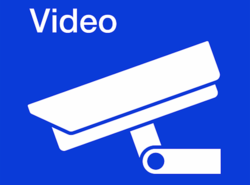 Video surveillance is a powerful tool that can deter nursing home abuse. However, cameras are not foolproof and when deterrence fails, the recordings they capture unassailable evidence that a crime has been committed.
Video surveillance is a powerful tool that can deter nursing home abuse. However, cameras are not foolproof and when deterrence fails, the recordings they capture unassailable evidence that a crime has been committed.
Using Cameras in Illinois Nursing Homes
As of 2016, it is legal to utilize “senior cams” within Illinois nursing home facilities. Under the Authorized Electronic Monitoring in Long-Term Care Facilities Act, the patient or an authorized representative can opt to monitor the resident’s care via a video surveillance system of their choice. Authorized representatives include the individual’s spouse, parent, children, or other legal guardian authorized by the patient to oversee his or her care.
Cameras in nursing homes must be conspicuously located. The use of hidden cameras remains prohibited. Further, individuals are required to post a sign at the entrance to the facility and outside of their room indicating that a camera is present and that it may be recording actions within the resident’s room.
When the individual has a roommate, the resident must receive the roommate’s or representative’s permission prior to placing a camera within the room. This permission must be granted in writing and can be rescinded at any time as they or their representative desires. The required consent form must include information regarding when cameras will be turned off, for instance when dressing, while using toilet facilities, during family visits, or during visits by clergy, etc. Further, the consent must include information regarding who will have access to the recording and how such recordings may be used in the event of an assault or other form of abuse or neglect
Understanding The Danger of Elder Abuse
Elder patients are at increasing risk of danger within nursing homes and residential care facilities. Globally, it is estimated that one in six individuals over the age of sixty will experience some form of elder abuse. These rates are particularly high within nursing home facilities where it is estimated that as many as 66% of staff will commit some form of abuse over the course of a year. Forms of abuse include physical assaults, neglect, emotional abuse, negligent care, sexual assault, as well as financial fraud.
According to the World Health Organization, reports of abuse are rising. Data gathered from elderly adults and their representatives show that of those abused within nursing home facilities, 33.4% experienced psychological abuse while 14.1% experience physical forms of abuse. A further 13.8% of reports arose from financial abuse, while 11.6% reported neglectful care. A small percentage, 1.9%, reported sexual assault, however, like other reports of sexual assault within the general population, it is believed this number is significantly understated. In fact, data presented by the the National Research Council in 2003 indicated that just over 1 in every 14 cases of elder abuse are ever reported to authorities.
Deterring the Threat
Cameras provide round-the-clock coverage of a loved one’s care and treatment and help deter incidents of elder abuse. They allow family members to monitor who enters the room, when they enter, how long they stay, and most importantly, what they do while they are there. Internet connections make it possible for family members to conduct this monitoring from anywhere in the world and take immediate action if they determine a problem exists.
Sometimes referred to as “granny cams,” these cameras make it possible to document patterns of physical, verbal, and sexual assaults. They may also capture images of caregivers ignoring patient needs, delivering substandard care, or “perusing” personal possessions and financial files for the purposes of committing theft or financial fraud.
Under Illinois law, recordings of abuse captured by cameras in compliance with the state statutes can be presented by an Illinois nursing home abuse lawyer and used as evidence in court. When combined with eyewitness statements, medical records, and financial statements, video recordings remove doubt regarding the timeline of events and who is responsible for causing the physical, emotional, or financial injuries a loved one suffers.
Cameras are limited to providing protection only within the areas in front of the lens. Family members, friends, and other representatives must maintain regular contact with their loved one and the individual’s caregivers. This can help family members and guardians determine changes in the patient’s behavior, mental health, physical condition, etc. that could signal the presence of abuse taking place outside of the camera’s view. In many cases, subtle changes in behavior, mental health, physical appearance, and financial habits are indications that abuse is present and that video monitoring should be intensified.

